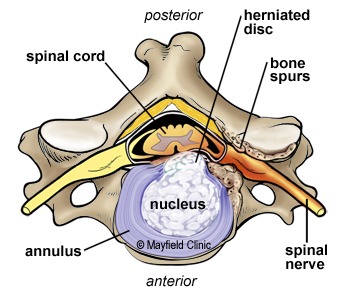Posterior Cervical Laminoplasty



Posterior cervical laminoplasty is a surgical procedure performed to address spinal cord compression in the cervical spine (neck) due to conditions like cervical spinal stenosis. Unlike anterior approaches, which involve accessing the spine from the front, posterior cervical laminoplasty is done through the back of the neck. The goal is to create more space for the spinal cord and nerves by partially removing or reshaping the lamina, the bony arch of the vertebrae.
Here’s an overview of posterior cervical laminoplasty for patients:
Indications:
Cervical Spinal Stenosis: Narrowing of the spinal canal in the cervical spine, leading to compression of the spinal cord.
Myelopathy: Spinal cord compression causing symptoms such as weakness, coordination problems, and difficulty with fine motor skills.
Preparation:
Medical Evaluation: Patients undergo a comprehensive medical evaluation, including imaging studies (MRI, CT scans) to assess the extent of the cervical spine issue.
Discussion with Surgeon: The surgeon explains the procedure, discusses potential risks and benefits, and answers any questions the patient may have.
Procedure:
Positioning: The patient is positioned face down on the operating table.
Anesthesia: General anesthesia is administered to ensure the patient is asleep and pain-free during the procedure.
Incision: An incision is made in the back of the neck to expose the cervical spine.
Laminoplasty Technique: Instead of removing the entire lamina (as in laminectomy), the surgeon makes strategic cuts or openings in the lamina to create a “door-like” hinge. This preserves the bony support while providing more space for the spinal cord.
Bone Grafts: In some cases, bone grafts may be used to help maintain the elevated position of the lamina.
Instrumentation: Plates and screws may be used to secure the lamina in its elevated position.
Closure: The incision is closed with sutures or staples.
Recovery:
Hospital Stay: The length of the hospital stay varies but is typically a few days.
Neck Brace: A neck brace or collar may be worn for a specified period to support the neck during the initial healing phase.
Physical Therapy: Rehabilitation exercises and physical therapy are introduced gradually to help restore neck strength and mobility.
Activity Restrictions: Patients are typically advised to avoid certain activities, such as heavy lifting or strenuous exercise, during the initial recovery period.
Follow-up:
Postoperative Visits: Patients have follow-up visits with the surgeon to monitor the healing process, address any concerns, and assess the effectiveness of the procedure.
Potential Risks and Considerations:
As with any surgical procedure, there are risks, including infection, bleeding, and complications related to anesthesia.
While posterior cervical laminoplasty aims to preserve the stability of the spine, there is a small risk of instability.
The success of the procedure in relieving symptoms varies among individuals.














